Old Kochi and Eye (I?)
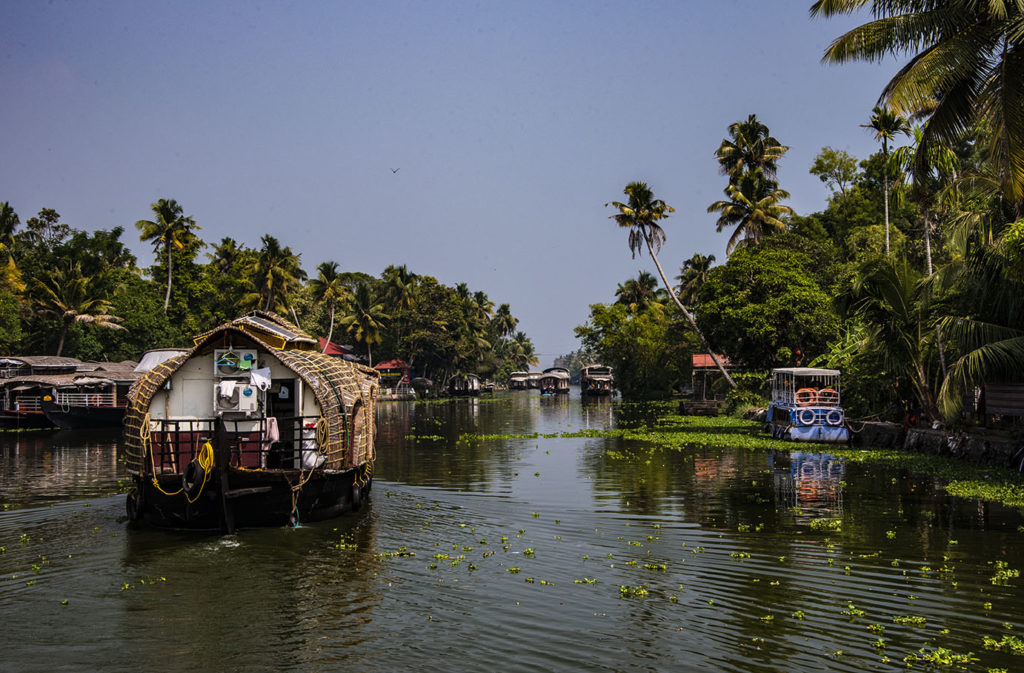
I’m not quite sure what to write about Fort Kochi. No critiques. I really liked the place. It’s photogenic as heck. Located a little over halfway down the coast of Kerala state, like Goa the area has had layers upon layers of foreign influence. There were the Arab traders who came for the spice. Then the Portuguese, then the Dutch and then the English. Each, I suppose, brought their own addition to the place. The Portuguese increased the spice trade to Europe and brought Christianity and Catholicism here so you find Cathedrals on almost every corner. The Dutch brought trade and a ‘Dutch’ overlay to the old Keralan palace. The English apparently brought laundry services.
Yes, laundry.
In the heart of old Fort Kochi you find the Dhobykama, which literally means laundry family. During the British Raj the English imported laundry workers from Tamil Nadu state because, apparently, they knew how to do laundry properly. All these years later, there are six families left and we spoke to a gentleman who was tenth generation and proudly told how both his children have gone onto university. From what he showed us of his pristine shirts, sheets and dhotis (sarongs that men wear here) he could do my laundry anytime. They were the whitest, best pressed items I’ve ever seen. Move over western dry cleaning. Of course, the Dhobykama may be a dying breed.
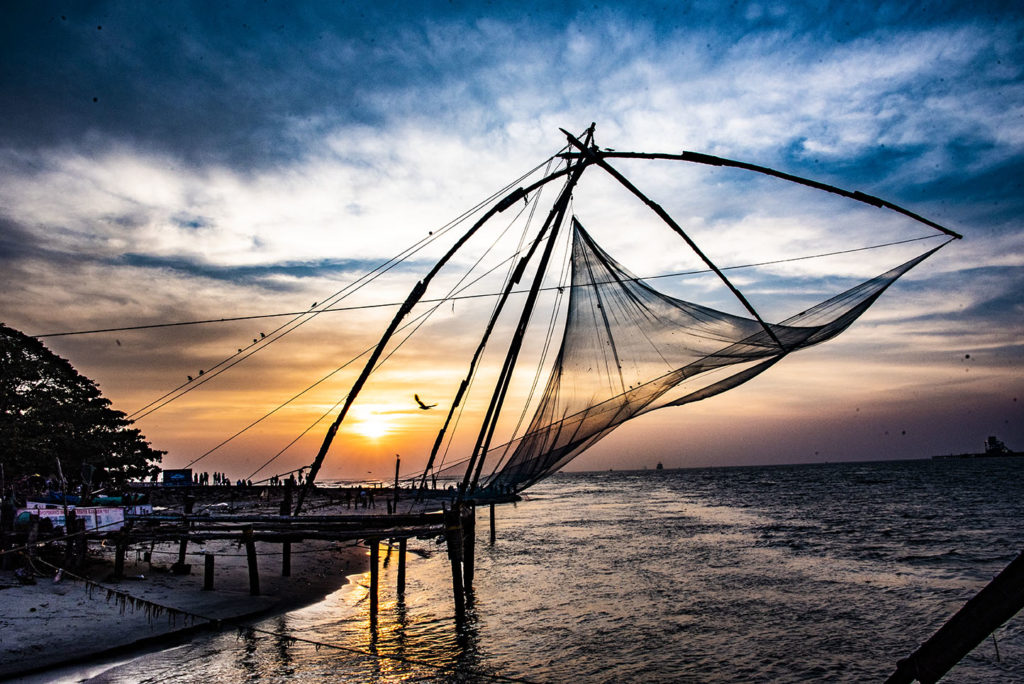
The Old Fort Kochi beach front is an amazing amalgam of old and new. A walk in the morning takes you past fishermen casting nets in the surf, fishing boats seeking the tuna leaping just off shore, joggers (ever seen a woman jog in a sari?), old men talking, tourists photo-gawking, even a ‘muscle beach’ corner where the young men have their weights set up to pump iron. Best of all are the ancient Chinese fishing nets (see the photos.) These huge contraptions were brought by the Chinese when they were still trading with Kerala back before Columbus stumbled upon America. They are huge nets draped on poles and cantilevered with ropes of rocks. They dip into the water and then back up, with their load of fish, and are absolutely one of the most photogenic fishing items I’ve ever seen. They are an iconic part of Kerala and one of the emblems of Fort Kochi.
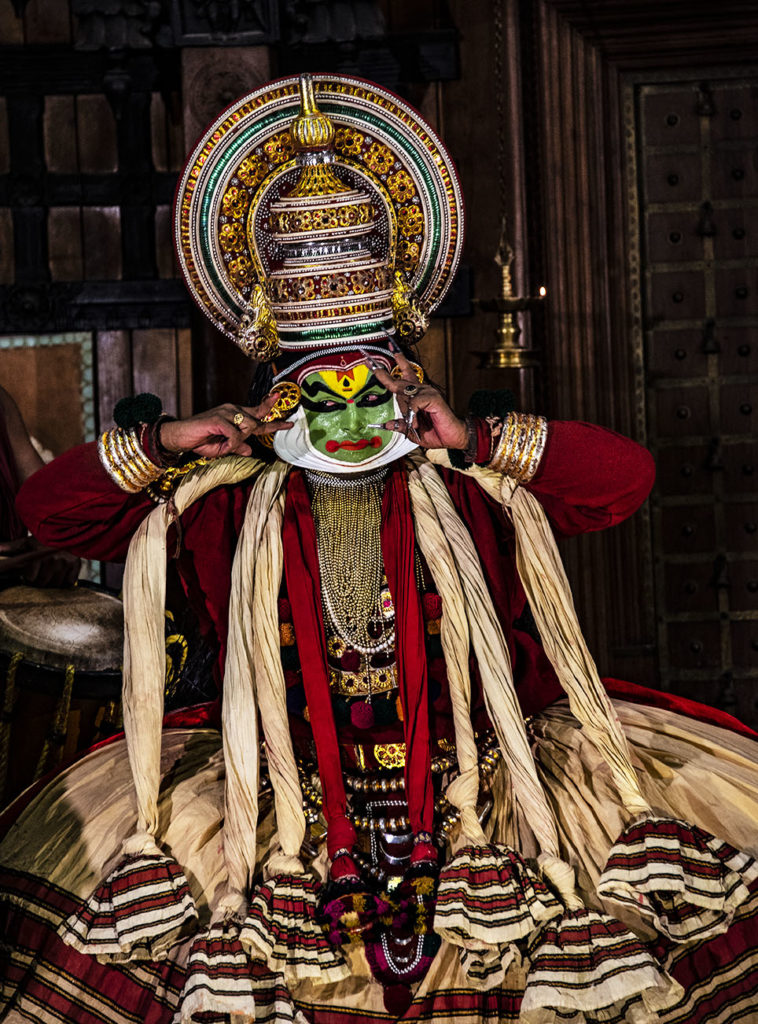
While we were in Kochi we went to see a Keralan dance troupe. These troupes exist in many places in the state and are an attempt to reclaim an ancient Royal Keralan dance form that disappeared when the royal house fell on hard times during the colonial era. The new dance was created in the 1700s and is called Kerala Kathakali. The dancers (all male) wear elaborate costumes and face paint to recreate figures out of ancient tales like the Ramayana. The first part of their performance was acquainting a tourist audience with the amazing eye and hand movements (Mudras.) The eyes are held wide open and dart one way and another in a way that had had the audience chuckling. For some of the characters they place a seed powder in the eyes which turns the whites of the eyes red. With the mudras and the eye movements, these characters are able to hold entire conversations. It was amazing to watch—and exhausting.
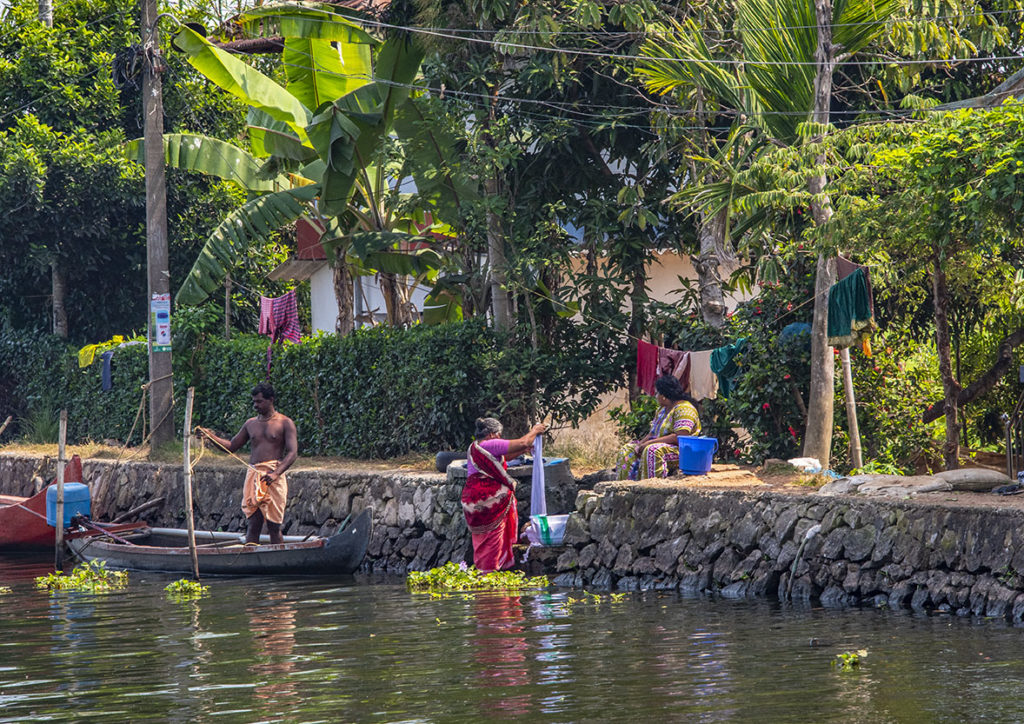
Sadly, we left Fort Kochi the next morning, leaving the scent of spice and the sound of the ocean behind for the supposed quiet of the Kerala backwaters. You see, Kerala has innumerable inland waterways that run between rice fields and the narrow dikes that hold the homes of people. Old men fish. Children go to school by boat. People live by the water, bathe in it, wash their dishes in it and drink it. Sadly, the water is green with algae and scummed with the diesel of the 1500 plus tourist boats that ply the supposed backwaters. Needless to say, so many engines means it’s not that peaceful and at night, moored next to a party boat it was even less so. But regardless of the downsides, I was busy with my camera. So much so, I probably looked a lot like those dancers with my eyes darting everywhere.
I know. I saw our boat driver laughing.
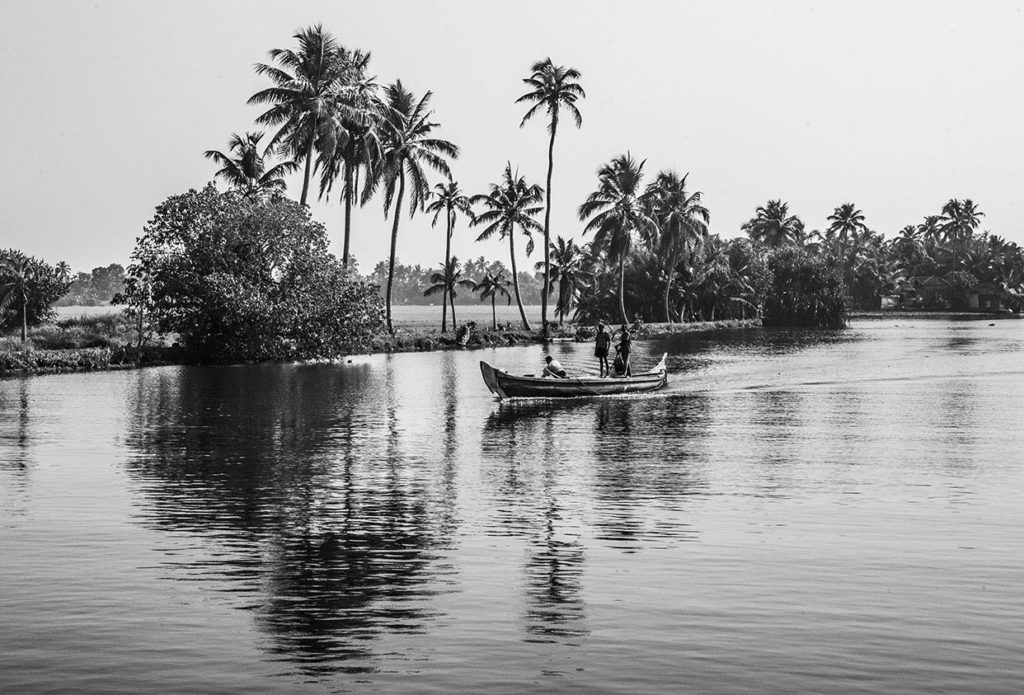










2 Replies to “Old Kochi and Eye (I?)”
Karen,
I could live on a houseboat in the Kerala backwaters. Beautiful pictures!
Thanks, Doug! Best to you and Rike and thanks for helping out Rachel!